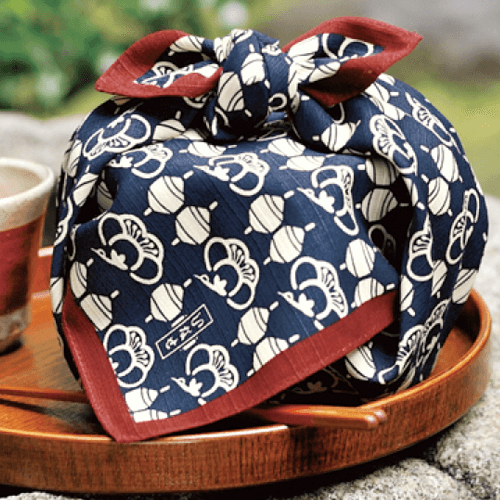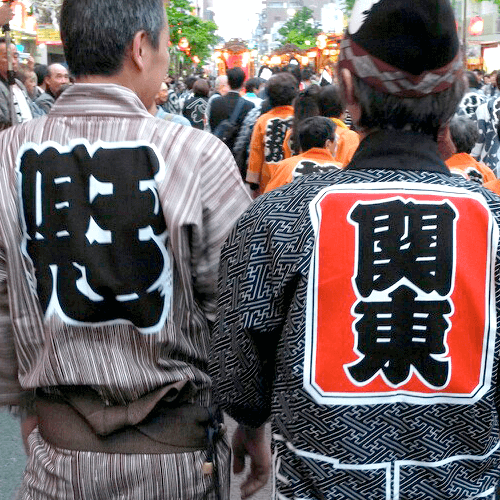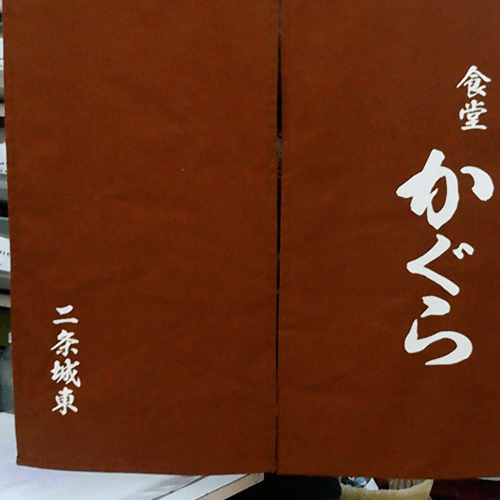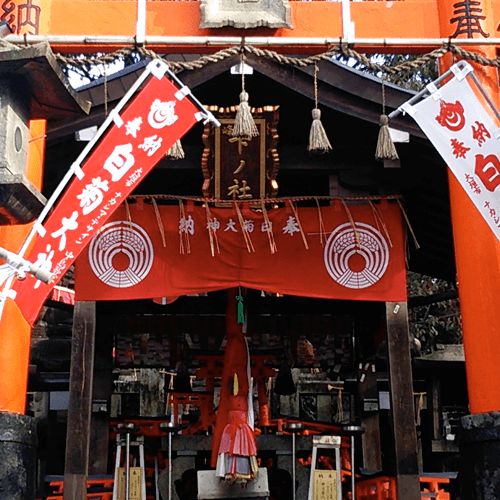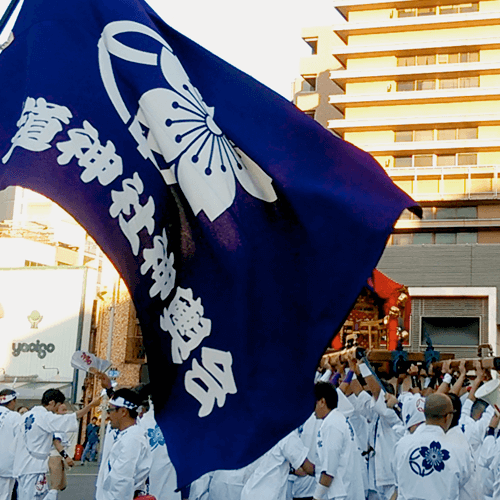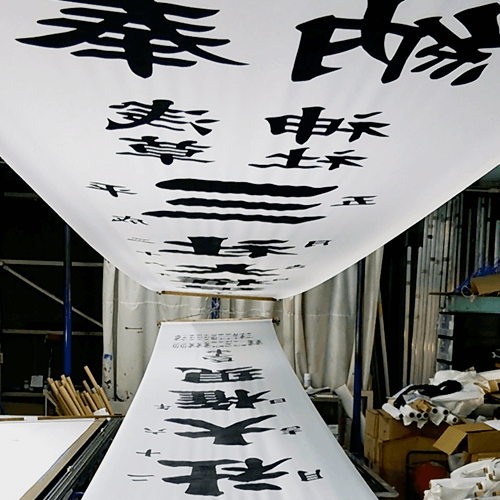Clearly dyeing symbols
History of “Shirushizome”
The Japanese traditional art “Shirushizome” has brought color to life in Japan since 1336.
It is a dyeing technique unique to Japan, and is used to clearly dye brand symbols or emblems into fabrics.
This Japanese traditional technique is crucial for easily conveying information on such items as
flags
bearing family crests, shrine banners, happi coats and hanten jackets worn at festivals,
shrine and
temple curtains, and noren shop curtains.
The patterns dyed by “Shirushizome” artisans
range from large ones such as crests to meticulous
ones such as family crests.
Unlike kimono dyeing, this technique is considered difficult to dye evenly because it easily causes
color bleeding or unevenness due to its method of dyeing a wide area in one color.



“Shirushizome” is evolving
In recent years, the “Shirushizome” technique has been recognized and drawn attention abroad.
Its textile value has also been recognized: SUGISHITA was asked by a designer to dye clothing
fabric for Paris Fashion Weekone of the world’s largest fashion events.
Having been engaged in various projects, such as collaborations with high-end
brands and comic and anime culture, the repair of a dress worn by the Meiji Empress, and the exhibition of a world-famous
artist, SUGISHITA’s “Shirushizome” has been evolving beyond preconceived ideas.
SUGISHITA’s internationally acclaimed colors
Creating a color is considered the most difficult part of the dyeing process. Take black, for example.
The color black is not simply one black color, but comes in countless shades.
Even if dyes are mixed in the same proportion, the resulting color may vary depending on the
environmental conditions
such as temperature, humidity, and climate.
Even in today's technology driven-environment, the final touch of the color depends on
artisans withabout 40 years of experience and intuition.
Shirushizome Factory SUGISHITA succeeded in producing a jet-black dye, a Japanese traditional
black that is difficult to attain, through the study of color shades and color development.The passion
of the third president, who is the ultimate color connoisseur, helped the company build
trust domestically and internationally.
Among various “Shirushizome” dyeing methods, the major ones are shown below.
The best dyeing method varies even for the same design depending on the customer’s needs,
such as
traditional texture, sturdy and easily washable, a large quantity quickly, and lowest price.



SUGISHITA’s factory is located in the thousand-year-old city of Kyoto.
“Shirushizome” can be seen on a daily basis in Japan, which has many shrines and temples.
SUGISHITA uses the finest groundwater that exists only in Kyoto City,
which is used for brewing
sake too, for the dyeing process to produce colors unique to
this place.
Even furoshiki wrapping cloths, which are said to be the world’s first reusable bag,
have family
crests printed on them to indicate their owners. “Shirushizome” has long mesmerized people and
been deeply loved.



